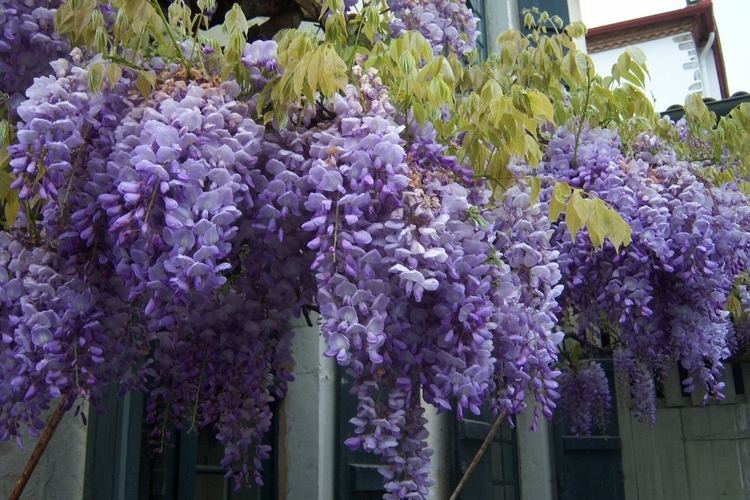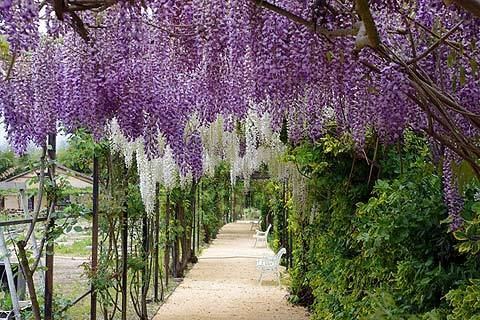Genus Wisteria Higher classification Wisteria | Scientific name Wisteria sinensis Rank Species | |
 | ||
Similar | ||
Wisteria sinensis chinese wisteria at plantmark wholesale nurseries
Wisteria sinensis (Chinese wisteria) is a woody, deciduous, perennial climbing vine in the genus Wisteria, native to China in the provinces of Guangxi, Guizhou, Hebei, Henan, Hubei, Shaanxi, and Yunnan. While this plant is a climbing vine, it can be trained into a tree-like shape, usually with a wavy trunk and a flattened top.
Contents
- Wisteria sinensis chinese wisteria at plantmark wholesale nurseries
- Nitrogen fixing perennial vine tree with edible flowers wisteria sinensis zones 5 9
- References

It can grow 20–30 m long over supporting trees by counterclockwise-twining stems. The leaves are shiny, green, pinnately compound, 10–30 cm in length, with 9-13 oblong leaflets that are each 2–6 cm long. The flowers are white, violet, or blue, produced on 15–20 cm racemes in spring, usually reaching their peak in mid-May in the northern hemisphere. The flowers on each raceme open simultaneously before the foliage has expanded, and have a distinctive fragrance similar to that of grapes. Though it has shorter racemes than Wisteria floribunda (Japanese wisteria), it often has a higher quantity of racemes. The fruit is a flattened, brown, velvety, bean-like pod 5–10 cm long with thick disk-like seeds around 1 cm in diameter spaced evenly inside; they mature in summer and crack and twist open to release the seeds; the empty pods often persist until winter. However seed production is often low, and most regenerative growth occurs through layering and suckering.

It is hardy in USDA plant hardiness zones 5-9, and prefers moist soils. It is considered shade tolerant, but will flower only when exposed to partial or full sun. It will also flower only after passing from juvenile to adult stage, a transition that may take up to 20 years. It can live for over a hundred years.

All parts of the plant contain a glycoside called wisterin which is toxic if ingested and may cause nausea, vomiting, stomach pains, and diarrhea. Wisterias have caused poisoning in children of many countries, producing mild to severe gastroenteritis.

Captain Richard Rawes of the East Indiaman Warren Hastings brought it from China to Britain in 1816, from where it spread to Europe and North America. It has secured for itself a place as one of the most popular vines for home gardens due to its flowering. It has however become an invasive species in some areas of the eastern United States where the climate closely matches that of China.

A one-acre (4,000 m2) specimen located in Sierra Madre, California is recognized by Guinness World Records as the world's largest blossoming plant.
